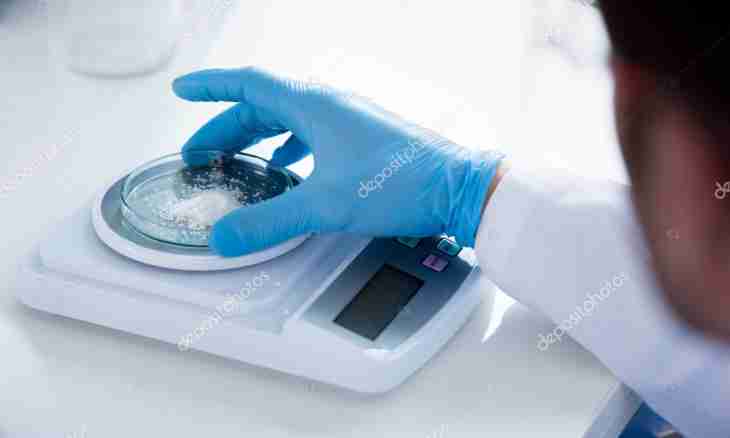The molar mass of an equivalent shows weight of one mole of a substance. It is designated by capital letter of M. of 1 mol - it is such amount of substance which contains number of particles (atoms, molecules, ions, free electrons), equal to number Avogadro (constant). Avogadro's number is approximately equal to 6.0221 · 10^23 (particles).
Instruction
1. To find the molar mass of substance, increase the mass of one molecule of the given substance by Avogadro's number: M = m (1 molecules) · N(A).
2. Molar weight has dimension [g/mol]. So, write down result in these units of measure.
3. The molar mass of an equivalent is in number equal to its relative molecular weight. The relative molecular mass of substance is designated as M (r). It shows the attitude of mass of a molecule of the specified substance to 1/12 mass of atom of isotope of carbon (with atomic number 12).
4. The symbol - 1 has 1/12 mass of atom of isotope of carbon (12) and. e. m: 1 and. e. m = 1/12 m(C) ≈ 1.66057 · 10^(-27) kg ≈ 1.66057 · 10^(-24).
5. It is necessary to understand that relative molecular weight - dimensionless size therefore between it and molar weight it is impossible to put the sign of identity.
6. If it is required to find the molar mass of a single element, address the table of chemical elements of D.I. Mendeleyev. The molar mass of an element will be equal to the relative mass of atom of this element which is specified usually from below each cell. Hydrogen has the relative atomic mass 1, helium - 4, lithium - 7, beryllium - 9, etc. If in a task high precision is not required, take the rounded value of weight.
7. For example, the molar mass of an element oxygen is equal about 16 (in the table it can be written down as 15.9994).
8. If it is necessary to calculate the molar mass of simple gaseous substance which molecule has two atoms (O2, H2, N2), increase the atomic mass of an element by 2: M (H2) = 1 · 2 = 2 (g/mol); M (N2) = 14 · 2 = 28 (g/mol).
9. The molar mass of complex substance consists of the molar mass of each of the components entering it. At the same time the atomic number which you find in Mendeleyev's table is multiplied by the corresponding index of an element in substance.
10. For example, water has formula H(2) O.Molyarnaya the mass of hydrogen as a part of water: M (H2) = 2 (g/mol); The Molar mass of oxygen as a part of water: M (O) = 16 (g/mol); Molar mass of all molecule of water: M (H (2)O) = 2 + 16 = 18 (g/mol).
11. The sodium hydrocarbonate (baking soda) has a formula NaHCO (3). M (Na) = 23 (g/mol); M (H) = 1 (g/mol); M (C) = 12 (g/mol); M (O3) = 16 · 3 = 48 (g/mol); M (NaHCO3) = 23 + 1 + 12 + 48 = 84 (g/mol).

